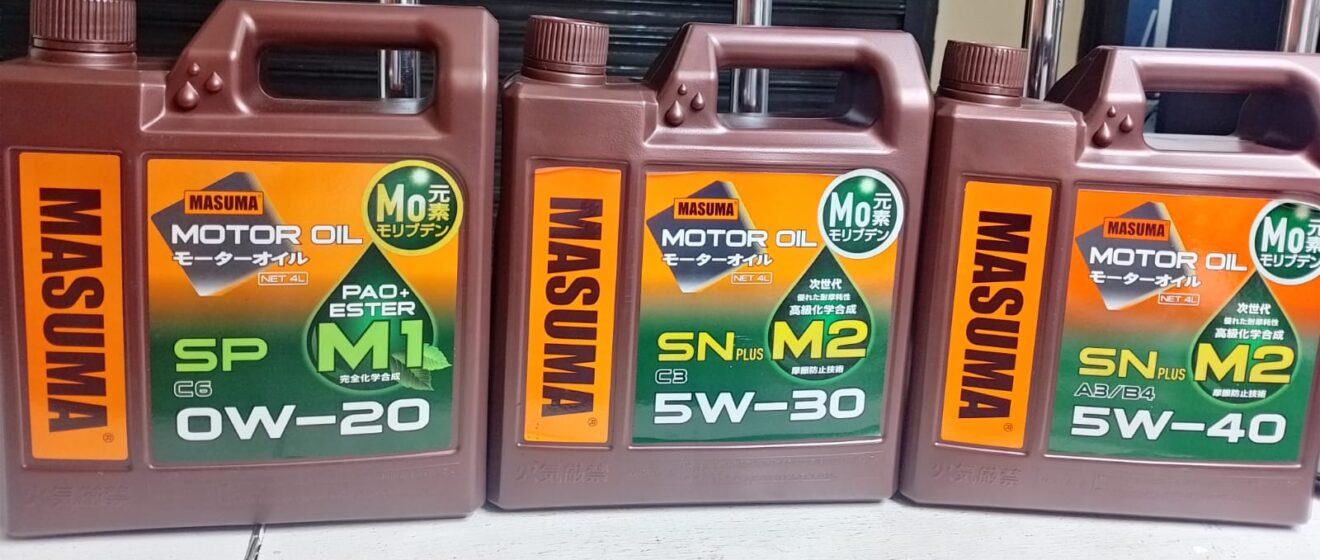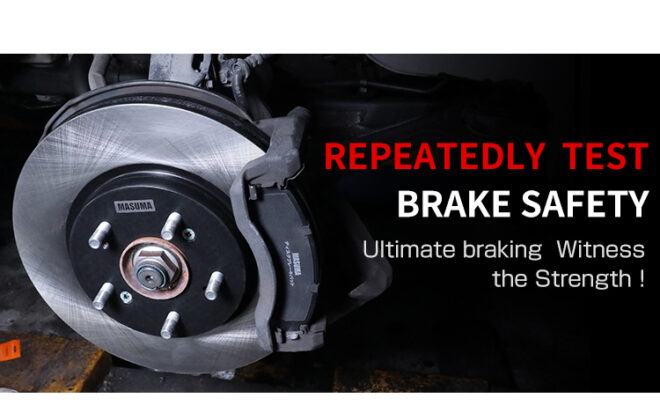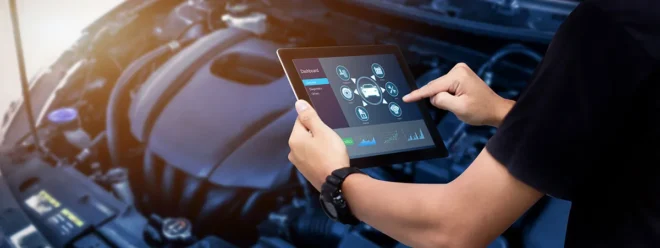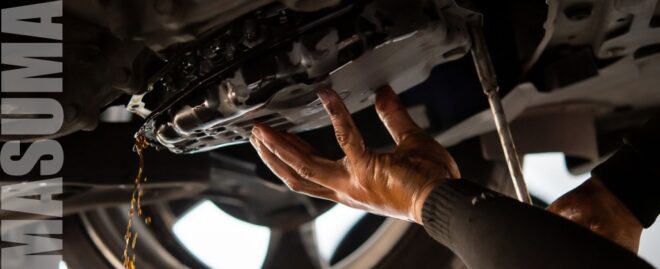0W20, 5W30, and 5W40 Explained
Understanding viscosity ratings, oil types, and making the right choice for your vehicle
Introduction
Choosing the right engine oil can feel overwhelming with all the numbers, debates, and conflicting advice out there. Whether you’re dealing with stop-and-go traffic in Nairobi or long highway drives, your engine oil choice matters more than you might think. This guide will help you understand the differences between oil types, viscosity grades like 0W20, 5W30, and 5W40, and make an informed decision for your specific driving conditions.
Understanding Oil Viscosity: What Do Those Numbers Mean?
The numbers on your oil bottle (like 5W30) tell a story about how the oil behaves at different temperatures:
The “W” Factor
- W stands for “Winter” – this is how the oil flows when cold
- Lower numbers = thinner oil when cold = easier starting
- 0W flows better than 5W in cold conditions
The Second Number
- This represents oil thickness at operating temperature (100°C/212°F)
- 20 is thinner than 30, which is thinner than 40
- Thicker oil provides more protection but can reduce fuel economy
Understanding API Ratings: The Letters Matter Too
Beyond viscosity numbers, every oil bottle displays an API (American Petroleum Institute) rating that tells you about the oil’s formulation:
Current API Ratings Explained:
API SP (2020+): Latest formulation for direct-injection engines, addresses low-speed pre-ignition (LSPI)
API SN PLUS (2018+): Enhanced version of API SN with additional LSPI protection
- Specifically addresses timing chain wear issues
- Improved protection against engine knock
- Better performance in turbocharged engines
Masuma Motor Oils are formulated to API SN PLUS and SP standards, providing superior protection for modern engines
API SN (2010+): Designed for modern engines with ceramic catalytic converters
API SM (2005-2010): Transitional formulation, less common today
API SL (2001-2005): Higher ZDDP content, preferred for older engines
What This Means for You:
- Newer vehicles (2015+): Look for API SN PLUS or SP ratings
- 2010-2018 vehicles: API SN PLUS offers enhanced protection over standard SN
- Older vehicles (pre-2010): API SN and SN plus offers backward compatibility which is okey
- High-performance engines: Consider the specific additive packages beyond just the rating
Engine Oil Categories: Understanding Your Options
1. Mineral Oils (Conventional Oil)
What They Are: Refined directly from crude oil with minimal processing
Characteristics:
- Most affordable option
- Basic protection for older engines
- Requires more frequent changes (3,000-5,000 km)
- Viscosity changes more with temperature
- Contains natural impurities
Best For:
- High-mileage vehicles (150,000+ km)
- Older engines with looser tolerances
- Budget-conscious maintenance
- Engines that consume oil regularly
Common Applications:
- Pre-2000 vehicles
- Farm equipment and generators
- Engines with significant wear
- Short-interval maintenance schedules
Advantages:
- Low cost
- Good seal compatibility in older engines
- Readily available everywhere
Disadvantages:
- Breaks down faster in extreme conditions
- Less stable viscosity
- More frequent changes needed
- Limited temperature range
2. Semi-Synthetic Oils (Synthetic Blend)
What They Are: Blend of mineral oil and synthetic base stocks (typically 70% mineral, 30% synthetic)
Characteristics:
- Better than mineral oil, less expensive than full synthetic
- Improved cold-weather performance
- Better oxidation resistance than mineral oil
- Moderate change intervals (5,000-7,500 km)
Best For:
- Daily drivers wanting better protection than mineral oil
- Moderate performance demands
- Vehicles transitioning from mineral to synthetic
- Cost-conscious consumers wanting upgrade benefits
Common Applications:
- 2000-2010 model vehicles
- Light-duty trucks and SUVs
- Fleet vehicles with moderate use
- Engines in good condition
Advantages:
- Cost-effective upgrade from mineral oil
- Better cold-start protection
- Improved fuel economy over mineral oil
- Good compromise between price and performance
Disadvantages:
- Not suitable for extreme conditions
- Shorter intervals than full synthetic
- Variable quality between brands
- May not meet latest API specifications
3. Full Synthetic Oils
What They Are: Manufactured using chemically engineered base stocks
The Science Behind Oil Quality: Base Stocks Matter Not all oils labeled “synthetic” are created equal. Understanding base stock classifications helps you make better choices:
Base Stock Categories:
Group III: Petroleum-based with synthetic additives (most “synthetic” oils)
- Highly refined mineral oil
- Meets synthetic performance standards
- Most affordable “synthetic” option
- Good for daily driving applications
Group IV: True synthetic using PAO (Poly-Alpha-Olefin)
- Chemically engineered molecules
- Superior temperature stability
- Excellent viscosity index
- Premium performance characteristics
Group V: True synthetic using esters
- Most advanced synthetic technology
- Exceptional high-temperature stability
- Natural detergent properties
- Highest performance applications
Why This Matters:
- Group III: Good for daily driving, meets most manufacturer specs
- Group IV & V: Superior heat resistance and shear strength
- Marketing Reality: Many “full synthetic” oils are actually Group III blends
Characteristics of Full Synthetic:
- Superior protection across temperature ranges
- Extended drain intervals (7,500-15,000 km)
- Better fuel economy
- Reduced engine wear
- Enhanced performance in extreme conditions
Best For:
- Modern engines (2010+)
- High-performance vehicles
- Extreme driving conditions
- Maximum protection priority
- Extended service intervals
The Great 0W20 Debate in Tropical Climates
Many drivers in equatorial regions worry that 0W20 oil is “too thin” for hot climates. Let’s address this concern with facts:
Why Manufacturers Specify 0W20
Modern engines are built with tighter tolerances and advanced materials. Manufacturers specify 0W20 for several reasons:
- Fuel Economy: Thinner oil reduces internal friction, improving fuel efficiency
- Cold Start Protection: Even in tropical climates, engines are “cold” when starting
- Advanced Formulations: Modern 0W20 oils are engineered to protect at operating temperatures
- Emissions Compliance: Helps vehicles meet strict emission standards
The Reality Check
- Your engine reaches 90-110°C operating temperature regardless of outside temperature
- Quality 0W20 oil maintains protective properties at these temperatures
- Manufacturer warranties are based on using specified oil grades
- Critical Point: Engine operating temperature is what matters, not ambient temperature
Understanding HTHS (High Temperature High Shear)
Modern 0W20 oils have HTHS ratings of 2.6-2.9 cP, which may seem low but are specifically engineered for:
- Tight bearing clearances in modern engines
- Reduced internal friction for fuel economy
- Adequate protection at normal operating temperatures
Masuma’s Oil Selection Guide
0W20 Engine Oil
Best For:
- Newer vehicles (2015+) specifying 0W20
- Daily commuting and city driving
- Vehicles with start-stop technology
- Maximum fuel economy priority
Ideal Vehicles:
- Most hybrid vehicles
Climate Considerations:
- Excellent for year-round use in Kenya
- Superior cold-start protection
- Maintains viscosity at operating temperatures
5W30 Engine Oil
Best For:
- Most gasoline engines from 2000 +〜
- Balanced protection and fuel economy
- Mixed driving conditions
- Moderate performance demands
Why It’s Popular:
- Versatile for various driving conditions
- Good compromise between protection and efficiency
- Widely recommended by manufacturers
5W40 Engine Oil
Best For:
- High-performance engines
- Turbocharged vehicles
- Severe driving conditions
- Older engines with higher mileage
Proven Viscosities for Tuned Performance Vehicles
The Science Behind Performance Oil Selection
When modifying engines for increased power, the factory oil specification often becomes inadequate. Scientifically validated performance oil choices are based on measurable parameters, not marketing claims.
Key Performance Metrics:
- HTHS Rating: Minimum 3.5 cP for turbocharged engines
- NOACK Volatility: Under 10% for reduced oil consumption
- Pour Point: -35°C or lower for cold-start protection
- Viscosity Index: 140+ for stable viscosity across temperatures
Proven Performance Viscosities:
5W40 – The Performance Standard:
- HTHS: 3.5-4.2 cP (excellent shear stability)
- Optimal for most tuned engines up to 400hp
- Best balance of protection and efficiency
- Scientific backing: Used in Formula 1 and WRC
10W40 – High-Stress Applications:
- HTHS: 4.0-4.5 cP (maximum shear resistance)
- For heavily modified engines (400+ hp)
- Track use and sustained high RPM
- Validated use: Professional racing applications
Performance Oil Selection Criteria:
- Base Stock: Group IV or V synthetic mandatory
- Additive Package: High ZDDP for flat-tappet cams
- Thermal Stability: Resists breakdown above 150°C
- API Rating: SN PLUS or higher for modern engine compatibility
Beyond Viscosity: How API Ratings Benefit Your Engine Choice
Understanding API Ratings’ Real-World Impact
API ratings aren’t just letters on a bottle – they represent fundamental differences in oil chemistry that directly affect your engine’s health and performance.
API Rating Benefits Breakdown:
API SL (2001-2005) – “The Last Great Oil”:
- Higher ZDDP content (1,200-1,400 ppm): Superior metal-to-metal protection
- Robust additive package: Excellent for flat-tappet camshafts
- Lower volatility: Reduced oil consumption in older engines
- Best for: Pre-2005 engines, modified engines, performance applications
API SN PLUS (2018+) – Enhanced Modern Protection:
- Advanced LSPI protection: Prevents timing chain stretch
- Improved shear stability: Better performance under stress
- Enhanced deposit control: Keeps engines cleaner longer
- Optimized for direct injection and turbocharged engines
- Best for: 2010+ vehicles requiring maximum protection
API SN (2010+) – Modern Engine Optimized:
- Low SAPS formulation: Protects ceramic catalytic converters
- Detergent additives: Prevents carbon buildup in direct injection engines
- Reduced ZDDP (800-1,000 ppm): Balances protection with emission compliance
- Best for: 2007+ vehicles with factory equipment intact
API SP (2020+) – Latest Technology:
- LSPI protection: Prevents Low-Speed Pre-Ignition in turbocharged engines
- Timing chain wear protection: Addresses modern engine weak points
- Ultra-low viscosity compatible: Works with 0W16, 0W12 oils
- Best for: 2018+ turbocharged engines, hybrid systems
How API Ratings Affect Performance:
Wear Protection:
- SL: Maximum protection for high-stress applications
- SN PLUS: Enhanced protection with modern additive technology
- SN: Balanced protection for modern engines
- SP: Optimized for low-friction, high-efficiency engines
Engine Cleanliness:
- SL: Basic detergency, requires more frequent changes
- SN PLUS: Advanced detergents with enhanced deposit control
- SN: Advanced detergents prevent carbon buildup
- SP: Prevents specific issues like timing chain stretch
Fuel Economy:
- SL: Not optimized for efficiency
- SN PLUS: Improved efficiency over standard SN
- SN: Moderate efficiency improvements
- SP: Maximum efficiency focus
Making the Right Choice: A Step-by-Step Guide
Step 1: Check Your Owner’s Manual
- Always start here – your manufacturer knows best
- Look for the specific viscosity recommendation
- Note any alternative viscosities mentioned
Step 2: Consider Your Driving Conditions
- City driving: Frequent starts/stops favor thinner oils
- Highway driving: Sustained speeds may benefit from slightly thicker oils
- Stop-and-go traffic: Modern thin oils handle this well
Step 3: Assess Your Vehicle’s Age and Condition
- New vehicles: Stick strictly to manufacturer recommendations
- High-mileage vehicles: May benefit from slightly thicker oil
- Well-maintained engines: Can usually use manufacturer specifications
Step 4: Factor in Climate Reality
For Kenyan Conditions:
- Morning temperatures: 15-25°C (oil is still “cold”)
- Operating temperature: 90-110°C (same regardless of outside temp)
- Conclusion: Outside temperature has minimal impact on oil choice
Step 5: Consider Oil Change Intervals
- Manufacturer specifications: Typically 5,000-15,000 km
- Recommended practice: 4,000-8,000 km for optimal protection
- Severe conditions (stop-and-go traffic, dust): More frequent changes needed
Step 6: Quality Indicators to Look For
- API rating appropriate for your engine age
- ACEA rating (European standard, often stricter)
- Manufacturer approvals (BMW LL, Mercedes MB, etc.)
- Base stock quality (Group III minimum, IV/V for performance)
Advanced Considerations for Specific Engine Types
Direct Injection Engines (2007+)
Modern direct injection engines have unique requirements:
Why Different Oil is Needed:
- No fuel spray cleaning intake valves
- Higher risk of carbon buildup
- Need for low SAPS (Sulfated Ash, Phosphorus, Sulfur) formulations
Oil Characteristics to Look For:
- API SN PLUS or SP rating
- ACEA C3 and above rating
- Low SAPS formulation
- Quality detergent packages
Turbocharged Engines
Turbo engines operate under higher stress and temperature:
Special Requirements:
- Higher HTHS ratings for shear stability
- Better thermal stability
- Resistance to oxidation
- Quick flow characteristics for turbo bearing protection
Debunking Common Myths
Myth 1: “0W20 is too thin for hot climates” Reality: Oil thickness at operating temperature (20, 30, 40) matters more than outside temperature.
Myth 2: “Thicker oil always provides better protection” Reality: Modern engines are designed for specific viscosities. Using oil that’s too thick can actually cause problems.
Myth 3: “I should use thicker oil as my car ages” Reality: While this was true for older engines, modern engines benefit more from maintaining manufacturer specifications and regular changes.
Myth 4: “All synthetic oils are the same” Reality: Base stock quality varies significantly. Group III, IV, and V have different performance characteristics.
Myth 5: “Extended drain intervals are always safe” Reality: While modern oils can last longer, factors like driving conditions, climate, and engine condition affect optimal change intervals.
Professional Recommendations
For Maximum Engine Life:
- Follow manufacturer specifications religiously
- Use quality oil from reputable brands like Masuma
- Change oil at recommended intervals (4,000-8,000 km)
- Allow engine to warm up before heavy acceleration
- Consider oil analysis for high-performance or high-mileage engines
Red Flags to Avoid:
- Using significantly thicker oil than specified
- Extending oil change intervals beyond recommendations in severe conditions
- Mixing different oil types without research
- Ignoring manufacturer updates or service bulletins
- Choosing oil based on price alone
Understanding Your Driving Conditions:
Severe Service Conditions (require more frequent changes):
- Stop-and-go city traffic
- Dusty environments
- Extreme temperatures
- Short trips (less than 10km)
- Towing or heavy loads
The Bottom Line
The “best” oil for your vehicle depends on several factors, but manufacturer specifications should be your starting point. Here’s what the science tells us:
- 0W20: Excellent for modern engines, even in hot climates
- 5W30: The versatile choice for most applications
- 5W40: Best for high-performance or specific applications
- 10W30: Ideal for older engines in good condition
- 10W40: Perfect for high-mileage engines with increased clearances
For Performance Applications: Scientifically validated viscosities like 5W40 and 10W40 with Group IV/V base stocks provide measurably superior protection under modified engine conditions.
Key Takeaway: Your engine doesn’t know the outside temperature – it only knows its operating temperature, which remains consistent regardless of whether you’re in Mombasa or Nairobi.
API Rating Reality: API SN PLUS offers the best balance of protection and modern engine compatibility
Masuma Motor Oils: API SN PLUS Excellence
At Masuma, our motor oils are formulated to exceed API SN PLUS and SP standards, providing:
- Enhanced LSPI protection for modern engines
- Superior deposit control technology
- Optimized additive packages for Kenyan driving conditions
- Full range full synthetic options
Need Help Choosing?
At Masuma, we stock premium quality oils across all categories:
- Full synthetic oils for maximum protection
If you’re unsure which oil is right for your vehicle:
- Bring your VIN or Chassis Number
- Consult our technical team for personalized advice
- Consider your specific driving patterns and needs
Remember: the best oil is the right oil for YOUR specific vehicle and driving conditions, not what worked for someone else’s different car.
For more automotive tips and technical guides, visit our blog regularly or contact our technical support team.




